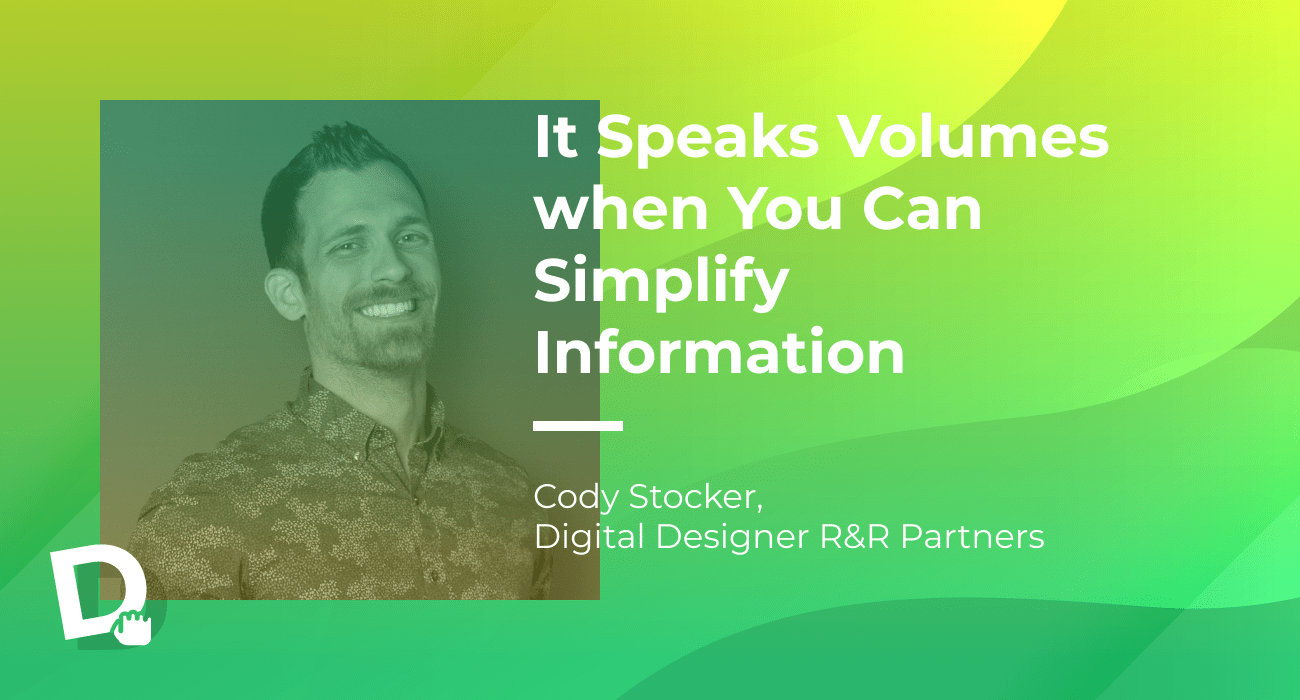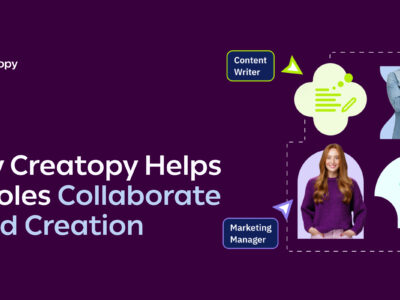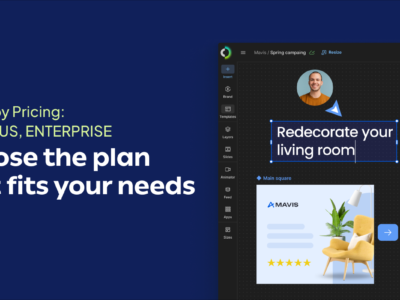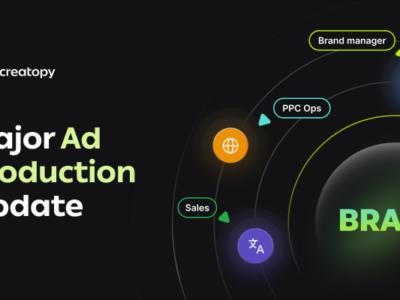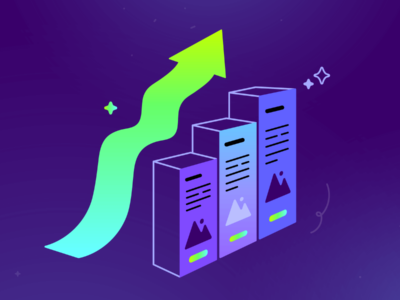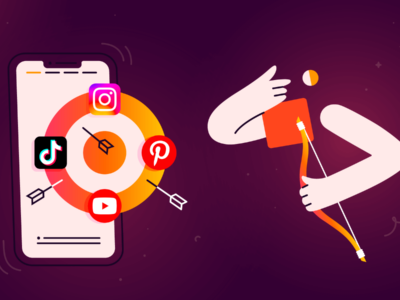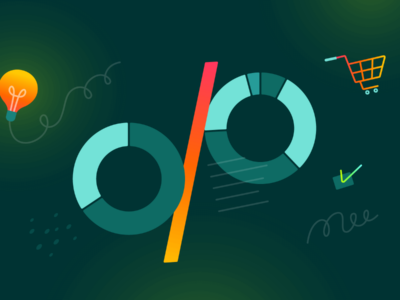Welcome back to another episode of the Drag & Drop Show!
This week we have an episode with Cody Stocker, a digital designer working for R&R Partners, a full-service, independent brand innovation agency. The company has a vast array of clients, such as Boeing, SeaWorld, and NHL, and has just successfully launched the new rebranding campaign for the city of Las Vegas, Nevada.
If you’re curious to find out what it’s like to work for SeaWorld, or how to conduct efficient meetings that benefit the entire team, then stay tuned for our insightful conversation.
Now, let’s drag and drop some ideas from this episode.
Key Takeaways
- Bringing a more modern approach to a brand that has a history is a great challenge, but it can be done through consistency while also paying attention to keeping the creative flow of the company.
- As always, when it comes to design, less is more. Simplifying the information without altering the message is key in design.
- Social media platforms and other digital outlets are often used to promote a brand, but one must keep in mind that advertising through DOOH (Digital-Out-Of-Home) is also a necessity.
- Meetings get people in the same room and make them creative only when they come with an open mind and prepare questions and small assignments.
Transcript
John Biggs: Here we are with Cody Stocker, a junior digital designer at R&R. Welcome to the show! We’re going to chat about meetings and about design a little bit. Do you have some time for that?
Cody Stocker: Yes, of course. And thank you for having me here!
John Biggs: Super. All right. Why don’t you tell us what your day to day looks like?
Cody Stocker: As a junior digital designer, I’m working more in the banners advertisement area. My day to day work with clients consists of creating banners for SeaWorld in different ways.
I grasped Creatopy pretty quickly because of the way we are building our banners in the most efficient, cost-effective, and less time-consuming way.
Creatopy helped me find an efficient workflow. I actually work in Creatopy every single day, it just depends on the client and the project.
John Biggs: All right, very cool. So you said SeaWorld. Is that what you’re working on?
Cody Stocker: Yes, correct. It is one of our clients.
John Biggs: Wow. That’s great. I think I’ve seen Shamu once, but it’s been a while. I don’t think he’s still hanging out there.
Cody Stocker: I don’t think so either.
John Biggs: How do you build online content for companies like SeaWorld, companies that are a household name? Everybody knows what it is. How do you hit that sweet spot so you don’t change the vision and the experience while trying to be creative within those confines?
Cody Stocker: That’s a good thing to pick up. That’s something we have to realize and one of the ways we’re doing it is by rebranding the way that SeaWorld presents themselves. It’s something that is a longtime goal, and we want to discover more of their dreams and directions to continue moving forward.
The idea (behind the SeaWorld rebranding) is to present more through imagery, and let imagery talk with the correct angles and expressions.
We want to make the pictures talk and do the work, and then from there, go more into a simplistic style of what they need on there, keeping it clean, simple because less is more sometimes. And that space around is also designed.
So, we are just trying to tie in what SeaWorld believes and bring in a more modern design to them to get them up to date with their new clients and potential clients. When people come through the park, they also have to keep the touch of what SeaWorld is, and do it in a more modernized way.
John Biggs: What does that mean? That’s actually pretty interesting. So you have a brand that everybody knows. I probably went there when I was a kid, and that was 70 years ago. How do you grasp that history? How do you ensure that history is maintained?
Cody Stocker: The history needs to be maintained on the aspects of the animals, and the way that the animals are. That is something that’s always been brought into the light, and we want to bring positive reinforcement to that, of the things that they actually do for the animals that are there, but also showing the enjoyment of the interaction with these animals. They’re fine creatures that we love to take care of, and the idea is to keep that interaction as more of an in-park feel, get that feeling out there of the experiences that you would partake when you come to the park.
John Biggs: Okay. How do you deploy that sort of thing? Where did these guys like to advertise? Where’s a good way to advertise for something that may not be too techie, or nerdy?
Cody Stocker: No, certainly. So, a lot of the ways that we do advertisement is, of course, through Facebook, Instagram, and Twitter. We’re also just doing banners that are put throughout different sites that we correspond with. And then we’re doing stuff in-park, that’s just smaller-scaled.
Keeping the flow and the consistency of the company throughout the entirety of it is probably the biggest challenge.
John Biggs: Okay, very cool. All right. Tell me a little bit about the unique meeting style you have. I think the team over there was talking about how to make meetings suck less.
Cody Stocker: Yes. Yes, we do. We always try to spice up the way we have meetings around here, just in the ideas of getting everyone together from different locations. R&R is a large company. So, we don’t always see what goes on in other locations. And I’ll always get to see what we work on. During our meetings, we come together to talk about what the week is about, come together, show some work that we do as a group, and sometimes get homework assignments to spice up the design a little bit. These meetings are more for thinking and feeling creative throughout the process. So, if anything goes, meetings help a lot of people get into one room and get creative very quickly.
John Biggs: What are some of the best practices you recommend for that particular thing?
Cody Stocker: A best practice would always be to come in, make sure you focus, and bring something to the table. Have an idea, have some kind of spark. A lot of people feed off of each other. So, having a positive idea could really start to flood and move things in the right direction. Coming in with an open mind is also important because you never know what you’re gonna hear from somebody else. And I think it’s best to just come prepared and leave with questions that you want to answer in the future, or that you could get answered by someone else. But always just have an open mind throughout the process.
John Biggs: How do you encourage an open mind in a situation that may be a little bit stifling for people?
Cody Stocker: It’s very tough for certain people, but keeping a positive manner of the way you critique others and have others critique you, and make sure that it’s always in a positive way really helps. It should be more of a teaching aspect, like teach me how I could be better, or how we could be better. And I think we need to grow more as a community and help each other out in that sense. I think that’s the starting point when you get to be more comfortable with talking about it, and being a barrier around it, and giving your sense, and hearing other people’s sense is probably the easiest way to get into this issue.
John Biggs: How do you do that over generations? I think there are different styles for different places. You’re working with SeaWorld, right? You’re probably working with folks who have been slopping around in the water for 40 years over at the company. How do you work? How do you meet with those folks? How do you connect?
Cody Stocker: We have a lot of different ways of connection, whether it’s connecting just through calls, or actually going out and meeting them. We recently had PMs go out to physically meet and talk with certain parks.
I believe that face-to-face communication is key, which helps with growth, with relationships, and it develops bonds. I think that getting the interaction part of the connection is the biggest thing, and then understanding each other, the end goal, and how we’re going to reach it.
So, taking in what our client needs, and then trying to push the envelope even a little bit farther. We want to drive business and impact.
John Biggs: Very interesting. All right, cool. What are some of your favorite tips and tricks to building out content that would go across platforms?
Cody Stocker: The best way I feel that works for me is when going across platforms start with certain sizes. I usually try to keep the design to three sizes, horizontal, vertical, and then a square. These are the common shapes nowadays, and you can work from those three sizes to build out any other sizes that you can think of. Going from there, I think that the easiest process is to start small and find the most efficient ways to spread it out to a larger scale.
John Biggs: Okay. And what are some of the things that you’ve seen recently that have been popular in terms of design or methods of getting these things out onto Twitter, and Facebook? What types of ads work?
Cody Stocker: For me personally, I think the ads that have less copy, but more simplicity in modern style are very in. It’s all about how you can capture the person’s eye quickly. Whether it’s something small, or it jumps at you on the web, it’s all about how you can get someone’s attention. But also, there is such a thing as too busy, and I believe that there’s too much information bombarding people. So, it’s a fine line, but keeping everything in that simplistic route, and following the Swiss design is very important.
As a designer, I drive around all the time looking at billboards and I can’t read magazines because I look at all the advertisements. The types of things that I take a look at are spacing, color design, and how they were utilized. Why did they choose it? Do you know what the company is like or how they’re trying to brand themselves? There are a lot of questions that come up.
I think it speaks volumes to be able to simplify information so the person still receives exactly what you’re going for. I believe that’s the way graphic design, and design in general is, is moving.
John Biggs: How do you get inspiration? Where do you get inspiration from right now? Back in the old days, you used to basically take a bunch of magazines and newspapers, and cut out pictures and things, and put them in a book. What do you think?
Cody Stocker: I used to do that too. I used to cut out magazines. I still got books that I keep around from back in the day of just different artists. However, I think it’s a lot easier to work with technology. I go on Behance a lot, and I love to see the type of work that’s posted there. I am gonna admit this, I go on Pinterest sometimes, even just to see what’s thrown up on there. And for me, it’s seeing other people’s work being presented.
And I like to go through those because not everything on Pinterest is perfect, but there are some in there that are the gold in the rough—nice, clean designs. You can get inspiration from anywhere.
John Biggs: You scrapbook from Pinterest, right?
Cody Stocker: Yeah, exactly.
John Biggs: Very cool.
Cody Stocker: It’s nice in that aspect, but keeping up with magazines that are coming out, or with the higher companies when they change their pages, or something like that, seeing what they’re doing, design-wise, their changes, why they do them, is another thing that I look at.
John Biggs: What’s next for you guys?
Cody Stocker: Right now, we are working strong. We have the Las Vegas rebrand that we just launched. We had that over the week. And we have some other big things rolling out in the future. It’s nice to always be working on different projects, and being able to jump around, and experience with new clients, and how they work and interact. It’s nice to get the challenge because even if they might think it’s impossible it doesn’t mean that it is. We’ll find a way to make it happen. And I think that’s the biggest thing for R&R and me. We’ll do everything we can to find that final goal that we need. I think nothing’s impossible, and we can always find the right design.
John Biggs: Very cool. All right. Thanks for joining us. We’re gonna send some folks over to look for your SeaWorld graphics. I’m sure they’re floating around somewhere, right?
Cody Stocker: Yeah, they definitely are.
John Biggs: All right, Cody, thanks for joining us. It’s been great!
Cody Stocker: I appreciate it, John Biggs. It’s been a great time. Thank you for being part of this and allowing me to be a part of it too!
We hope that you were inspired by this talk about design. It’s vital to know how to simplify ideas in order to reach their essence and send the right message while also having an open mind when attending meetings.
With this episode, we have reached the end of Season One of The Drag and Drop Show.
Click here to give Creatopy a spin.
If you liked this episode, hit “Subscribe” to get notified of the latest episodes wherever you get your podcasts:
Thanks for tuning in!
The Drag & Drop Show is an original series created by Creatopy.

